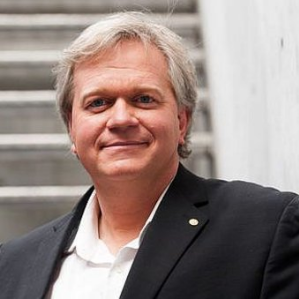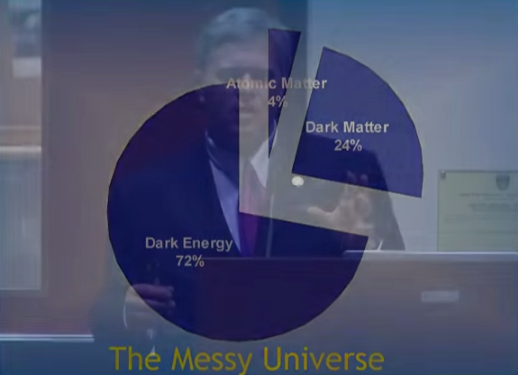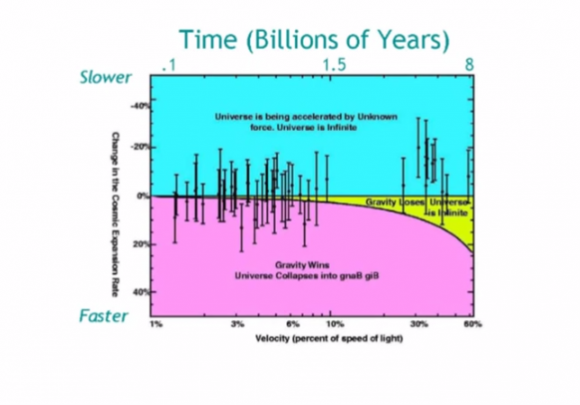aNewDomain — Whether we are living in a complex computer simulation, as famously theorized by Oxford’s Nick Bostrom and others, doesn’t much concern Nobel Laureate astrophysicist Brian P. Schmidt.
— Whether we are living in a complex computer simulation, as famously theorized by Oxford’s Nick Bostrom and others, doesn’t much concern Nobel Laureate astrophysicist Brian P. Schmidt.
In a talk he gave here at the Heidelberg Laureate Forum (HLF) in Germany today, Schmidt told the audience about a discussion he once had with a philosopher on the so-called Simulation Hypothesis. “In the end, because there is no sensible way to convince me that we are not in a sophisticated simulation, I figured if we were in a simulation, my job would be to measure the simulation,” he joked. “And that’s okay with me.”
Well, why wouldn’t it be? For Schmidt, truth is and must be measurable, and what cannot be measured cannot be determined to be true, he told the crowd. “Everything we (astrophysicists) do is based on measurements,” he added. “To the level you can measure something is the level that you can believe it.”
Scroll below the fold to watch video of Schmidt’s HLF 2016 presentation. Ed.
Schmidt, with Saul Perlmutter and Adam Reiss, won the Nobel Prize in Physics in 2011 based on supernovae-based observations the teams made in the mid 1990s. Those observations suggest the Universe not only has been expanding ever since the Big Bang, but it is doing so at an ever-accelerating rate.
 At the HLF 2016 conference today, which gathers winners of the highest math and computing prizes in the world with academics, young researchers and journalists, Schmidt said it was a finding that no one expected, least of all the astrophysicists who discovered it.
At the HLF 2016 conference today, which gathers winners of the highest math and computing prizes in the world with academics, young researchers and journalists, Schmidt said it was a finding that no one expected, least of all the astrophysicists who discovered it.
Prevailing wisdom had it that gravity would slow galactic expansion over time, he said.
What is powering this acceleration? That is the next big question.
One of best explanations, said Schmidt, is that there is “energy in empty space that actually pushes matter apart.”
That energy is otherwise known as Dark Energy, which Schmidt says makes up about 69 percent of the universe, though it is exceedingly difficult to detect with current instruments, or even measure. In fact, dark energy is itself an enigma. So is dark matter. No one yet knows what they are, but they are part of the very strange recipe of ingredients that make up the universe.
So in addition to dark energy, there is dark matter, which is about 26 percent of everything, he said. Only five percent of the mix comprises atoms like Hydrogen, Helium and Lithium, he added, explaining that about a tenth of a percent is made up of neutrinos and five hundredth of a percent of the universe is made up of photons.
“We don’t know exactly what dark matter is, but we have a good guess,” Schmidt told the crowd of academics today, “but dark matter could well be some undiscovered particle that, like a neutrino, can pass through earth. It has gravity, just like atoms, but is essentially invisible.”
The accelerating universe discovery came as a result of more than a decade of research by two teams, one led by Schmidt’s High-z Supernova Search Team at Australian National University with Reiss.
 Perlmutter led a second, competing team, unknown to Schmidt’s Australia-based team at the time, called The Supernova Cosmology Project at Lawrence Berkeley National Laboratory and the University of California in Berkeley, CA.
Perlmutter led a second, competing team, unknown to Schmidt’s Australia-based team at the time, called The Supernova Cosmology Project at Lawrence Berkeley National Laboratory and the University of California in Berkeley, CA.
Starting in 1994 using 200MHz Pentium computers and digital imaging sensors, the teams were competing in an effort to map the universe using the most distant supernovae they could detect, Schmidt said. In particular, they tracked a type of supernova, called a Type 2 (or Type 1a) supernova, which essentially is a very old star about as dense as our Sun but compacted to a sphere about the size of the Earth.
After studying and tracking some 50 such supernovae, they discovered that the light they emitted was far weaker than they would expect, a clear sign that the expansion of the Universe is getting faster and faster.
“It seemed too crazy to be right,” Schmidt said. “We were a little scared.” In fact, when he first saw the results, “I actually got this sinking feeling in my stomach,” he said, “thinking I had just spent three years of my life making a giant mistake.”
But after testing the results and painstakingly comparing results from Perlmutter’s team at UC Berkeley, they published a paper.
And the rest, as they say, is galactic history.
Schmidt noted that the finding was actually once theorized by Albert Einstein in 1917 but dismissed, in Einstein’s own words, as his “greatest blunder.”
“If we knew what it was we were doing, we wouldn’t call it research would we?” Schmidt said, quoting Einstein, pointing out that “Einstein’s greatest blunder turned out to be (my) greatest achievement.”
 A new set of questions now looms large for astrophysics as a result of the accelerated universe findings, he added.
A new set of questions now looms large for astrophysics as a result of the accelerated universe findings, he added.
They are: What is dark energy? Why do neutrinos have mass? Why is the universe not just full of photons? And what is inflation?
These days, Schmidt is vice-chancellor at the Australian National University. His passion, he says, is earthier than you might imagine, given his station. Schmidt is seriously into wine. In fact, Schmidt and his family live on a Canberra farm and own the Maipenrai winery there.
At the Nobel ceremony in Stockholm, Schmidt actually presented a bottle of his wine to King Carl XVI Gustaf of Sweden. I think we can all raise a glass to that.
For aNewDomain, reporting from HLF 2016 in Heidelberg, Germany, I’m Gina Smith.
Want to go deeper? Check out Schmidt’s explanation on the official Physics Nobel Prize video 2011, below.
Here’s the full video of Schmidt’s presentation at HLF 2016.
Here’s another video I particularly like for Schmidt’s cogent explanations of the astrophysics issues involved in the discovery.
Can’t get enough? Here’s another video where Schmidt goes even deeper. It’s called “The Universe: From Beginning to End.”
Find Schmidt’s slide demonstration, as given in Stockholm, here.
Cover image: Moca.Monash.edu, All Rights Reserved













